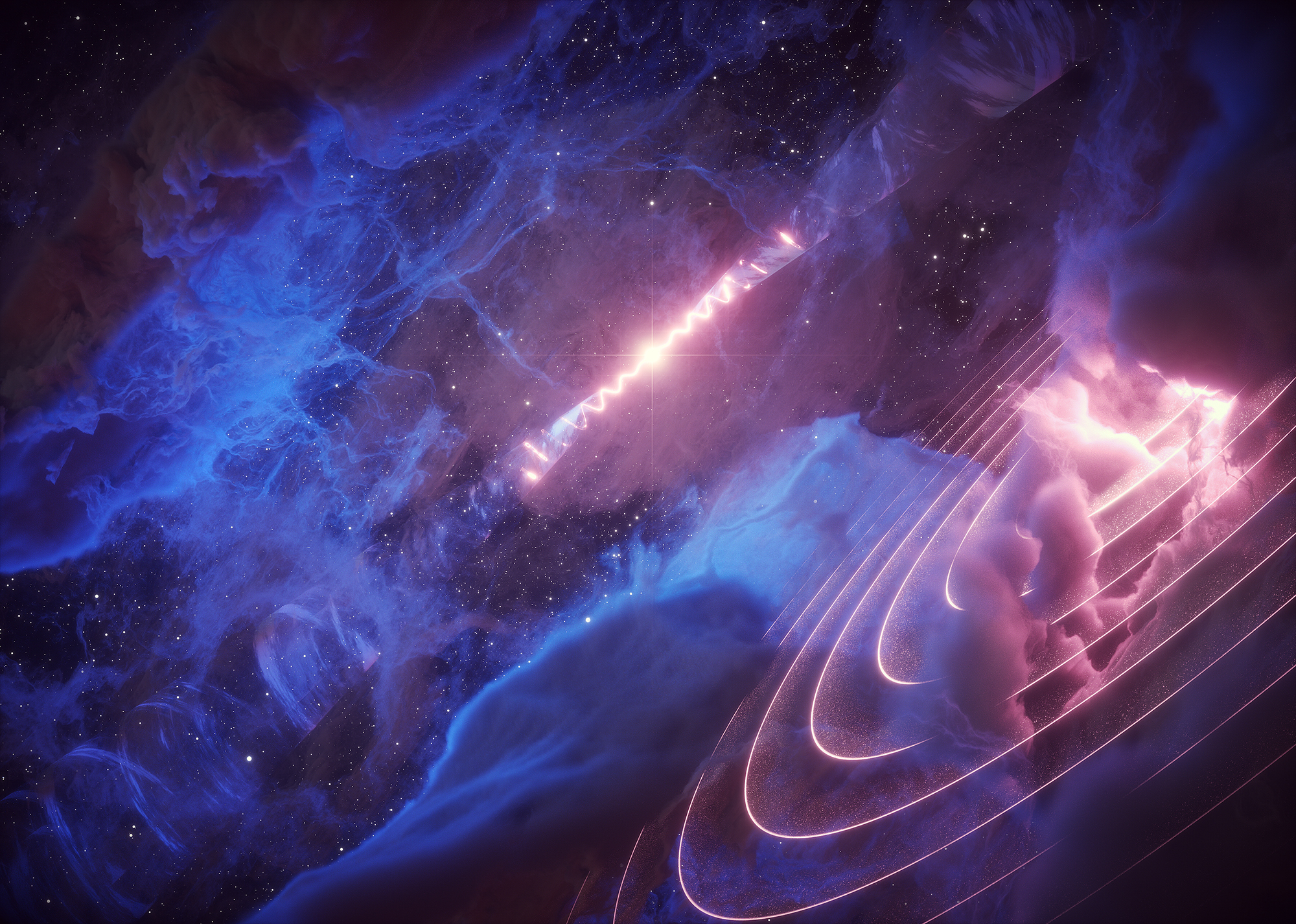Mysterious gamma-ray 'heartbeat' detected from cosmic gas cloud

A cosmic gas cloud has a mysterious gamma-ray "heartbeat" that appears to be in sync with a neighboring black hole.
Using data from the Arecibo Observatory in Puerto Rico and NASA's Fermi Gamma-ray Space Telescope, an international team of researchers found the "heartbeat" in a cosmic gas cloud in the constellation Aquila, the eagle. The cloud "beats" in rhythm with a miniature black hole located roughly 100 light-years away, suggesting the objects are connected in some way, according to a statement from the DESY national research center in Germany.
The black hole is part of a microquasar system known as SS 433, which includes a giant star that is approximately 30 times the mass of the sun. A microquasar is just a small quasar, the brightest type of object in the universe, which consists of a large black hole that emits extraordinary amounts of light as it gobbles up its stellar neighbors. As the two objects in SS 433 orbit each other, the black hole pulls in matter from the giant star, creating an accretion disk around the black hole.
Related: The strangest black holes of the universe
"This material accumulates in an accretion disc before falling into the black hole, like water in the whirl above the drain of a bath tub," Jian Li, lead author of the study from the DESY national research center, said in the statement. "However, a part of that matter does not fall down the drain but shoots out at high speed in two narrow jets in opposite directions above and below the rotating accretion disk."
The jets consist of high-speed particles and ultra-strong magnetic fields that produce X-rays and gamma rays, which are detected by the Fermi Space Telescope. However, the accretion disk wobbles, or precesses, meaning that the two jets shoot out into space along a spiral path, instead of a straight line, according to the statement.
The microquasar SS 433 sways with a period of 162 days. Simultaneously, the researchers found the same pattern of behavior in the gamma-ray signal emanating from the inconspicuous gas cloud, which they have named Fermi J1913+0515. Their findings, published Aug. 17 in the journal Nature Astronomy, suggest the gas cloud's emission, or "heartbeat," is powered by the microquasar.
Get the Space.com Newsletter
Breaking space news, the latest updates on rocket launches, skywatching events and more!
However, the two objects are located relatively far apart, at a distance of about 100 light-years. Therefore, further observations are needed to fully understand how the black hole powers the heartbeat in the gas cloud.
"Finding such an unambiguous connection via timing, about 100 light years away from the microquasar, not even along the direction of the jets is as unexpected as amazing," Li said in the statement. "But how the black hole can power the gas cloud's heartbeat is unclear to us."
Follow Samantha Mathewson @Sam_Ashley13. Follow us on Twitter @Spacedotcom and on Facebook.
Join our Space Forums to keep talking space on the latest missions, night sky and more! And if you have a news tip, correction or comment, let us know at: community@space.com.

Samantha Mathewson joined Space.com as an intern in the summer of 2016. She received a B.A. in Journalism and Environmental Science at the University of New Haven, in Connecticut. Previously, her work has been published in Nature World News. When not writing or reading about science, Samantha enjoys traveling to new places and taking photos! You can follow her on Twitter @Sam_Ashley13.
-
rod From the nature.com link provided, the report says "SS 433 is a unique Galactic microquasar containing a compact object, most probably a black hole of ~10–20 solar masses (M⊙) orbiting an ~30 M⊙ A3-7 supergiant star with an orbital period of 13.082 days (ref. 2). The rate of mass transfer from the companion is determined from analysis of optical lines3 and is thought to be as high as 10^−4 M⊙ yr−1, which is orders of magnitude larger than the Eddington limit. This steady supercritical accretion state powers highly collimated jets of plasma and mass-loaded non-polar outflows at a similar level4–6, with kinetic powers exceeding ∼10^39 erg s−1."Reply
Follow up studies are coming and these should be very interesting to read. A 20 solar mass BH could have Schwarzschild radius ~ 59 km.









